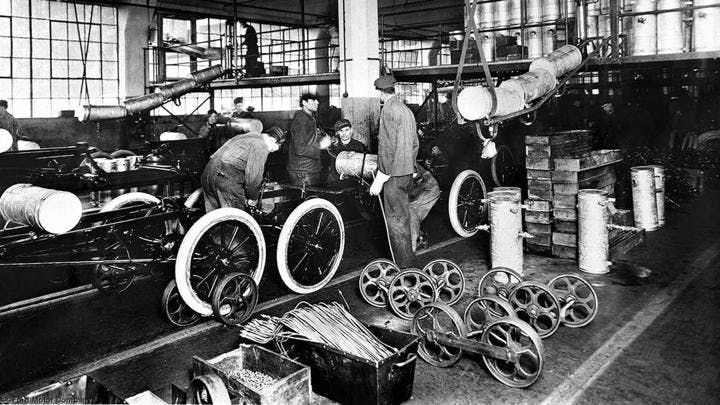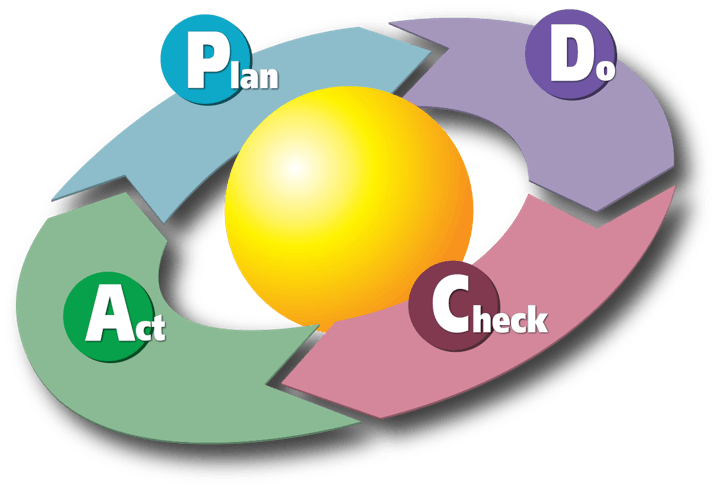Continuous Improvement (everything you need to know)

Continuous improvement is an agile methodology aimed to promote regular improvements (both big and small) by empowering all employees throughout the organization. This process is frequently referred to as Kaizen (a Japanese word for “change for better”) in manufacturing circles.
While the definition of continuous improvement (CI) may be a bit abstract, we’d like to spend the rest of this post outlining why CI is so important and how you can apply it to all aspects of the business (ranging from business processes to managing people).
Why should I care?
We’ll first kick things off by outlining the need to continuously improve as an organization. According to Professor Richard Foster, the average lifespan of a company listed in the S&P 500 index of leading US companies has decreased by more than fifty years in the last century.
In other words, businesses are being formed (and are dying) at a rate faster than ever before. If your organization isn’t moving forward and improving, it’s dying. If you’re a leader responsible for growth, you’ll want to pay attention to the rest of this article. You can also watch this video by Steve Jobs, which illustrates why you should care about continuous improvement:
The history of continuous improvement
As you might imagine people have been trying to continually improve systems and processes since the dawn of time, but the methodology was formalized in the early 1900s as organizations started approaching management through the lens of the scientific method.
Henry Ford was also a major contributor in these early days with the introduction of lean manufacturing, which focused on key principles like standardization, just-in-time manufacturing, and eliminating waste.

After WWII, Japanese manufacturers learned from Edwards Deming and instrumented many processes based on continuous improvement like total quality management (TQM), which led to their rise as a global manufacturing power.
Toyota picked up on these processes (referred to as the Toyota Production System), and referred to them as Kaizen, which is what leads us to what we have today.
Benefits of continuous improvement
Now that we have the history of out the way, let’s dig into the benefits that continuous improvement can offer your organization.
More productive
When you empower all levels of your organization to improve, they will come up with creative solutions to solving pain-points that they experience on a daily basis. It’s impossible for the executives to understand all the issues inside the organization, that’s why you need to get everyone involved. This is especially true if you’re a new manager.
This broad range of experience can help optimize existing process (and create new ways to improve productivity).
Agility
If you think about why many companies fail, it’s oftentimes a result of internal processes vs. market conditions. By instilling a mindset of continuous change through the organization, it allows you to be more flexible, as employees feel empowered to make changes. This decentralized decision-making structure is powerful (and rare) in many modern workplaces.
Happier Employees
Many reasons why people leave organizations is because change is outside their locus of control. This employee turnover is extremely expensive for your organization, and oftentimes is completely avoidable. Once again, when you empower all levels of the organization to remove the “pain” and roadblocks from their daily workflows, you will keep people longer. They will also be much happier.
A Culture of Learning
One of the most valuable parts of continuous improvement is its focus on learning. Yes, failure is a part of learning, but through an iterative learning process is where major breakthroughs happen. If your organization is scared to fail, they will never learn the major lessons that will drive the business forward.
A playbook for continuous improvement
There are many strategies for how you can implement Kaizen inside your organization, but the high level structure is as follows:

This process is referred to as the PDCA process (plan–do–check–act) and is similar to the scientific method. Here’s how the process works:
Plan
In this first phase, you’ll need to identify an opportunity to improve. You can use a tool like Friday to surface these insights from people on your team. Make sure to avoid identifying opportunities based on gut-feel. There needs to be something more substantial in this step. If you work in a team, make sure to have enough proof points to sell them on the opportunity.
We recommend outlining what a success might look; it’s important to get the team onboard and agree on a common way to measure the effect of the change.
Do
The next phase is to implement the potential solution on a small scale. The reason why it’s important to test the opportunity on a “pilot” is to protect against downside. If you work in software development and push a new feature to all your customers, the risk associated with this decision is high.
Check
In this phase, you need to measure the effectiveness of the change. Make sure to reference the key metrics you outlined in the first step. Did it perform better or worse?
Whenever you make a chance to a system, there are potential side effects that hide beneath the surface. Make sure to look for second-order effects, as the surface-level “iceberg” oftentimes contains a lot more beneath the surface.
Act
At this point, you should have collected enough data to make an educated decision. Make sure to collect a mixture of qualitative and quantitative feedback to create a balance of feedback.
If you’re looking for other frameworks, we recommend TQM or Six Sigma.
Continuous improvement with people at work
At Friday, we believe strongly in applying the methodologies outlined above with “people processes” inside your organization. The feedback loop that can help you improve a manufacturing process can also help you build better teams. We recommend the following strategies:
- Have 1-1s every week. In these meetings, you can learn what makes each employee tick. You can also understand the struggles they face (and the opportunities that exist)
- Ask your team a few basic questions every week (or run a weekly retrospective). Create reoccurring feedback loops without adding meetings.
Conclusion: Constant iteration is required
There’s no such thing as a perfect process, and we’ve seen one thing you should be aware of when building a culture of continuous improvement inside your organization. But there are things you can do personally and as a team to work faster.
Make sure to have a healthy balance of optimization of existing processes, but don’t be afraid to look for step-function changes too. If everyone is looking for small changes, you may miss out on the market-shifting events that happen (see the innovator's dilemma for examples).
Continuous improvement is a process that can help all aspects of your organization. If you’re a leader, you need to follow these principles. The future of your business (and your legacy) depends on it.


